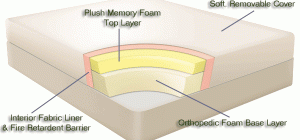 Raise your hand if you consider choosing the right snake camera for sewer inspections an impossible feat.
Raise your hand if you consider choosing the right snake camera for sewer inspections an impossible feat.
Most contractors deal with their fair share of disappointments when they splurge on the wrong product. We eliminate those risks by teaching you how to buy an inspection camera that delivers desired results. The key is to scrutinize and examine your viable options before investment.
That way, you have a better idea of what to expect during an inspection.
Here are some tips for choosing the right camera for sewer inspections:
1. Create a Game Plan
Making a checklist is the most important tip for choosing the right snake camera for sewer inspections. It accelerates your search and helps narrow your options. You can then use that information to find a diagnostic tool that aligns with your requirements.
Here are a few questions to consider:
- What is the ideal size of the inspection camera for your project?
(Optimal camera head size ranges from 10mm-18mm).
- Can your camera fit into the entryway and easily move in the pipeline?
- What type of environmental elements will your camera get exposed to?
- Does your camera deliver a high image resolution?
- What is the product warranty?
- Does it match your budget?
Your answers can lead to a worthwhile investment. Always make sure that you correspond with reputable retailers when you buy an inspection camera. Otherwise, you wind up with shoddy devices that only cause headaches.
2. Ideal Display Size and Image Resolution
Despite popular belief, larger display screens are not better for sewer inspections. Large display screens can lead to poor image resolutions without the right features. Likewise, small display screens do not show high-quality images regardless of the image resolution.
In both cases, the mismatched features only lead to blurry images that hinder your drainage decisions during the inspection.
Here are a few other things to remember:
- Avoid larger screens because they often distort images if you don’t have a high-resolution camera
- Make sure that the final image is not too pixelated
- Invest in snake cameras with advanced display features to increase long-range visibility and adjust brightness whenever required
- Test your camera to ensure that its high contrast images don’t obstruct clear visibility by hiding farthest objects into darkness
Lastly, when it comes to drainage inspections, your primary goal is to access hard to reach places and dingy pipelines. We advise you to match the resolution requirements with screen size before investment.
3. Select Cameras with LED Lights
Snake cameras with LED lights improve navigation in unlit inspection sites. You can find the LED lights attached to the exterior diameter of your camera.
When it comes to sewer lines and plumbing projects, it becomes a must-have quality for your diagnostic tool.
Your LED lights should:
- Have a high battery power to last for extended inspections
- Feature high-quality brightness and suitable beam width
- Sensitive image sensor for better results
Apart from that, do not assume that more LED lights mean higher image quality. The number of LED lights will not matter when you have a single source of light with these specific features.
4. Flexibility vs. Rigidity: What Is More Important?
Most snake cameras for sewer inspections and plumbing services feature rigid camera pipes. Having this feature improves its sturdiness. These camera pipes are less likely to get worn out after repeated use.
However, too much stiffness makes maneuvering the inspection camera challenging for many contractors. When that happens, your camera might get stuck between pipes or damaged when you push too hard.
The best idea is to choose a camera pipe that strikes a good balance between rigidity and elasticity. Having this feature enables you to steer the camera better when you investigate the sewer lines. It also makes it easier for you to bend it or reel it away to stop your lens from colliding into an oncoming obstruction.
Bonus Factors to Consider Before You Buy an Inspection Camera
Sometimes looking beyond standard designs can work wonders for your business. Choose advanced features to increase efficiency, minimize risks, and optimize outcomes.
Here are a few new specifications to consider:
- Memory
Buy a snake camera that records video to maintain a routine report of your inspections. These cameras typically have an external SD card (or internal memory).
- Waterproof Design
Sewer inspections can get messy within minutes. Having a waterproof design retains image quality and functionality when your device gets wet.
- User-Friendly Features
Look at the ergonomic features before you buy a snake camera for sewer inspections. Using handheld models can make navigation easier.
- High-Durability
Buying waterproof inspection cameras limits mishaps. You should also consider a chemical resistant coating/covering for increased durability and minimized maintenance costs when examining hazardous areas.
Any combination of these features can facilitate your inspection. We recommend choosing an option that aligns with your service requirements and budget constraints.
Ask an Expert
Do you want to get the best value for your investment?
Finding a credible borescope retailer is the way to go. You can request a pre-purchase consultation. Experts can share tips for choosing the right snake camera for sewer inspections. Their advice can help you shortlist the best inspection cameras from the versatile choices available in the market.
The Bottom Line
In conclusion, think about technological upgrades and design features that will optimize your inspection process. Use your checklist to choose the right snake camera for sewer inspections, drainage assessment, and other plumbing projects.







